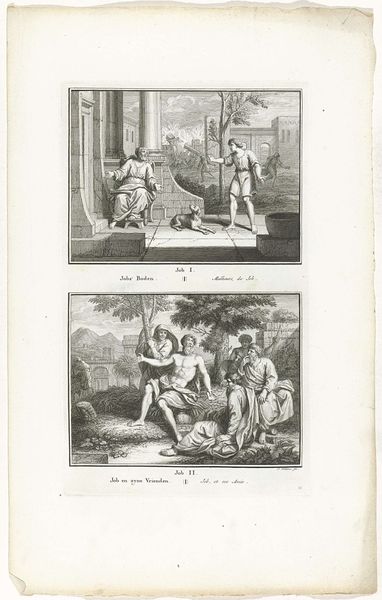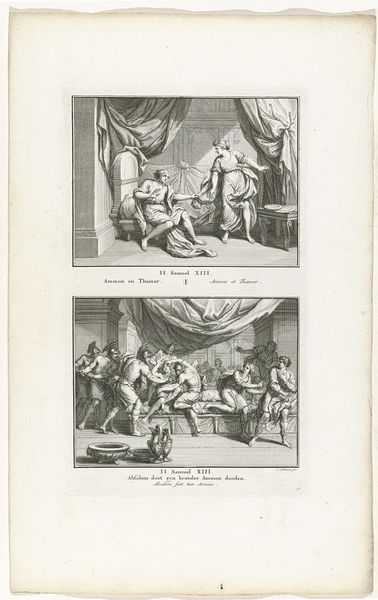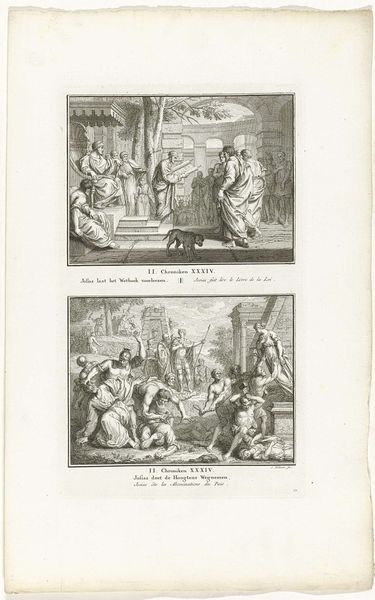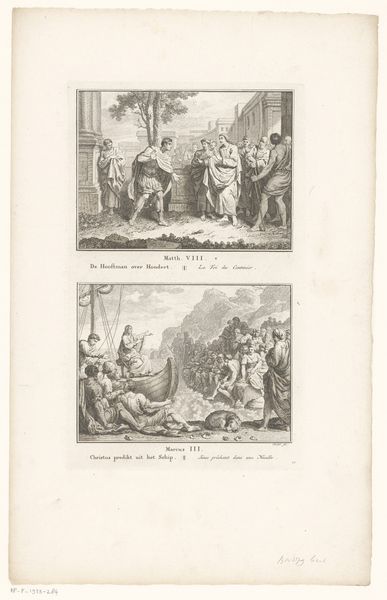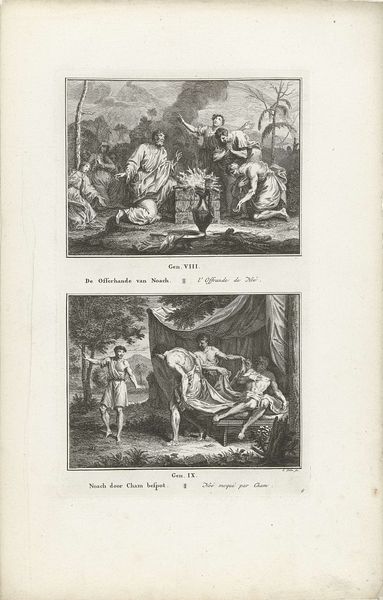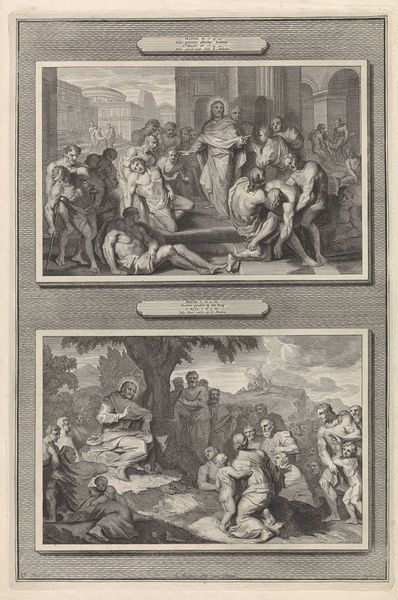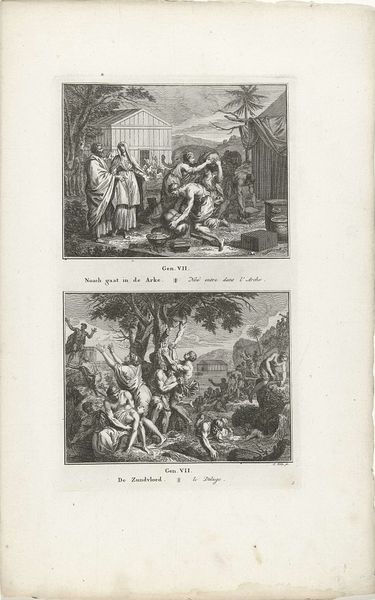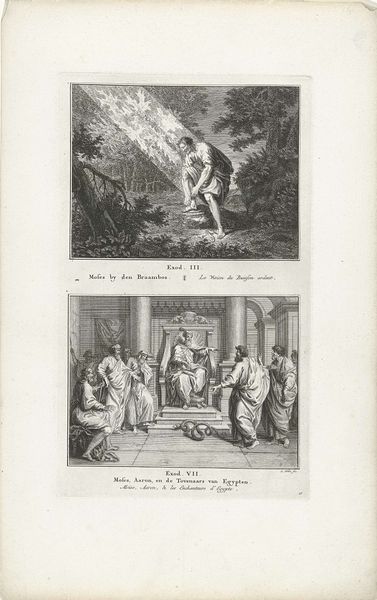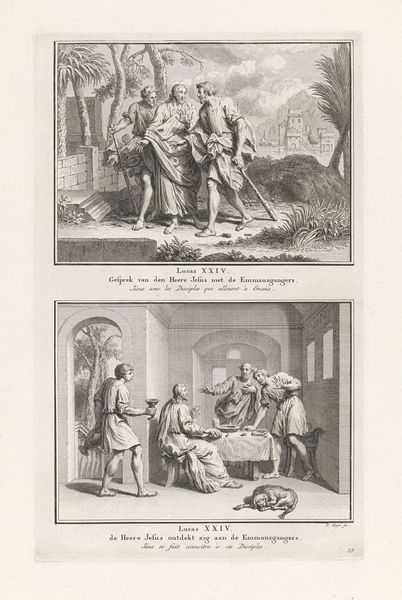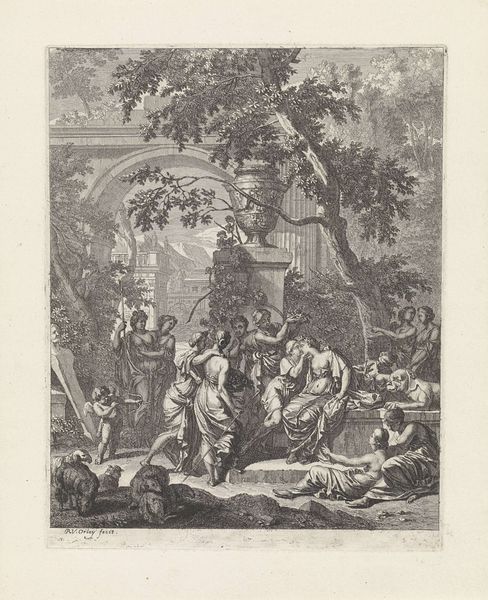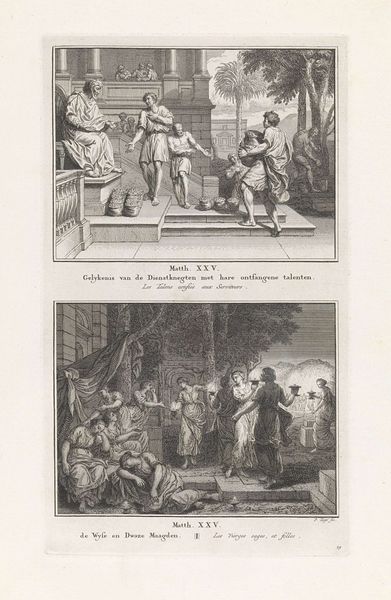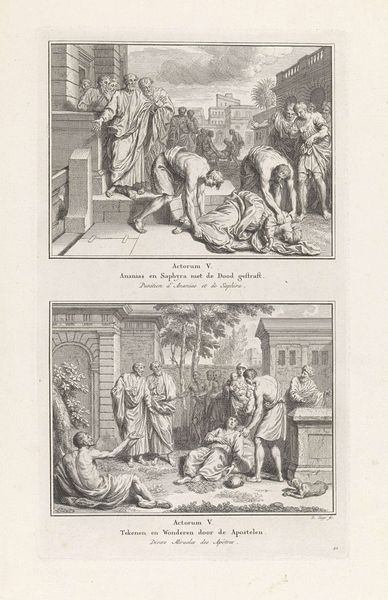
Zieke voor de god Ixora gebracht / Zieke met zijn gezicht in de urine van een koe 1728
0:00
0:00
bernardpicart
Rijksmuseum
print, engraving
#
narrative-art
#
baroque
# print
#
old engraving style
#
figuration
#
islamic-art
#
history-painting
#
engraving
Dimensions: height 338 mm, width 224 mm
Copyright: Rijks Museum: Open Domain
This etching, made by Bernard Picart around the late 17th or early 18th century, presents two distinct scenes, each offering a glimpse into unfamiliar rituals. The upper panel, set indoors, features a multi-armed deity atop an altar, presiding over a ritual where attendants bring forward a sick individual. Below, a contrasting outdoor scene shows a prostrate person with their face pressed into cow urine, as part of another healing practice. The composition employs stark contrasts between light and shadow, guiding the viewer's eye across the detailed figures and architectural elements. The artist’s precise lines render the textures of clothing and the contours of faces, capturing the exoticism that European audiences then associated with foreign customs. This work, therefore, functions on a semiotic level, using culturally specific symbols—religious iconography, gestures, and settings—to convey ideas about faith, health, and cultural difference. Picart’s strategic use of visual encoding reflects a broader discourse on cultural relativism and challenges fixed notions of religious practice. The aesthetic precision in the depiction of these rituals suggests that art serves as a medium to interpret and document the unfamiliar, prompting ongoing dialogue between cultural contexts.
Comments
No comments
Be the first to comment and join the conversation on the ultimate creative platform.
